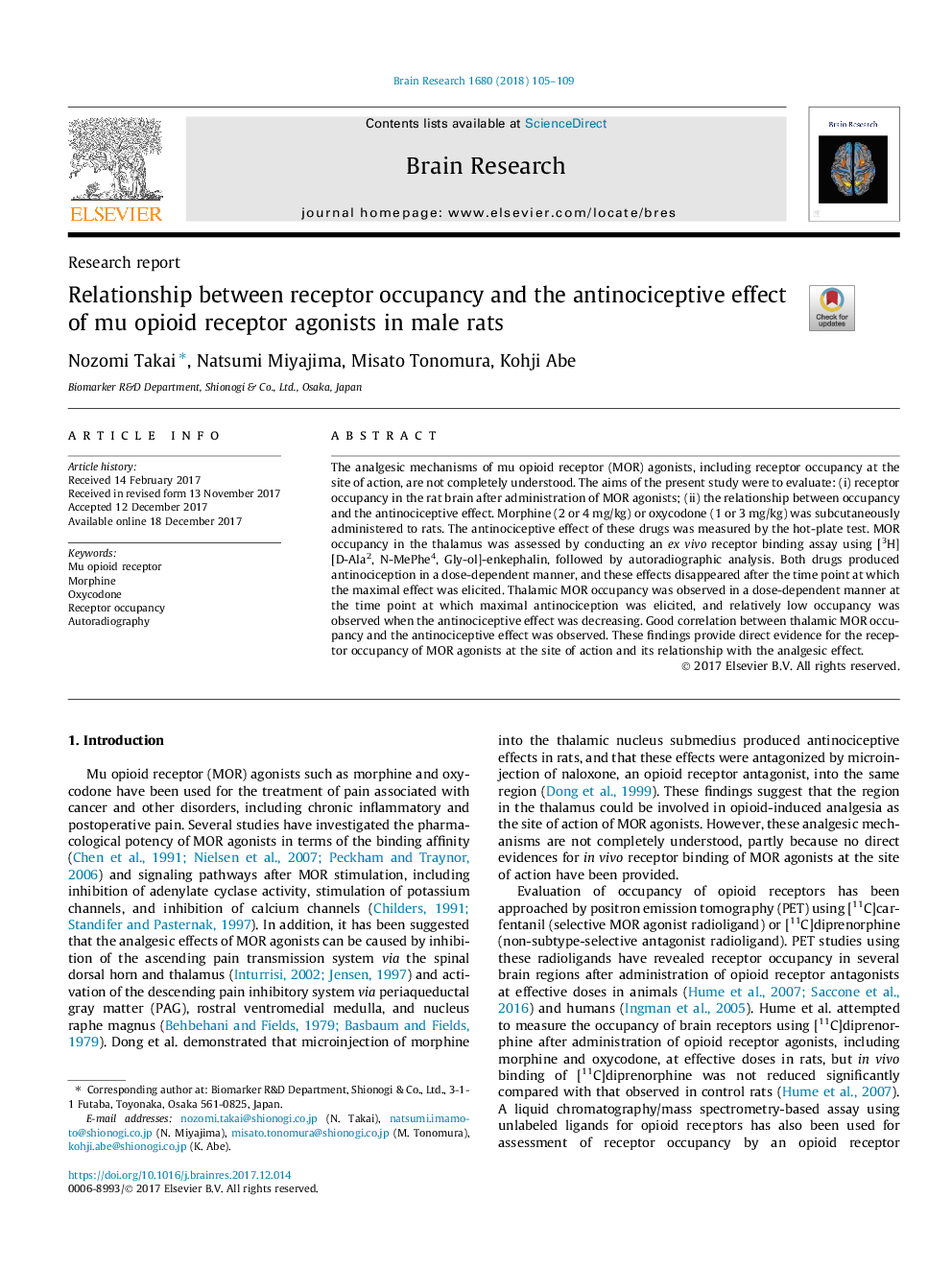| Article ID | Journal | Published Year | Pages | File Type |
|---|---|---|---|---|
| 8839914 | Brain Research | 2018 | 5 Pages |
Abstract
The analgesic mechanisms of mu opioid receptor (MOR) agonists, including receptor occupancy at the site of action, are not completely understood. The aims of the present study were to evaluate: (i) receptor occupancy in the rat brain after administration of MOR agonists; (ii) the relationship between occupancy and the antinociceptive effect. Morphine (2 or 4â¯mg/kg) or oxycodone (1 or 3â¯mg/kg) was subcutaneously administered to rats. The antinociceptive effect of these drugs was measured by the hot-plate test. MOR occupancy in the thalamus was assessed by conducting an ex vivo receptor binding assay using [3H] [D-Ala2, N-MePhe4, Gly-ol]-enkephalin, followed by autoradiographic analysis. Both drugs produced antinociception in a dose-dependent manner, and these effects disappeared after the time point at which the maximal effect was elicited. Thalamic MOR occupancy was observed in a dose-dependent manner at the time point at which maximal antinociception was elicited, and relatively low occupancy was observed when the antinociceptive effect was decreasing. Good correlation between thalamic MOR occupancy and the antinociceptive effect was observed. These findings provide direct evidence for the receptor occupancy of MOR agonists at the site of action and its relationship with the analgesic effect.
Related Topics
Life Sciences
Neuroscience
Neuroscience (General)
Authors
Nozomi Takai, Natsumi Miyajima, Misato Tonomura, Kohji Abe,
